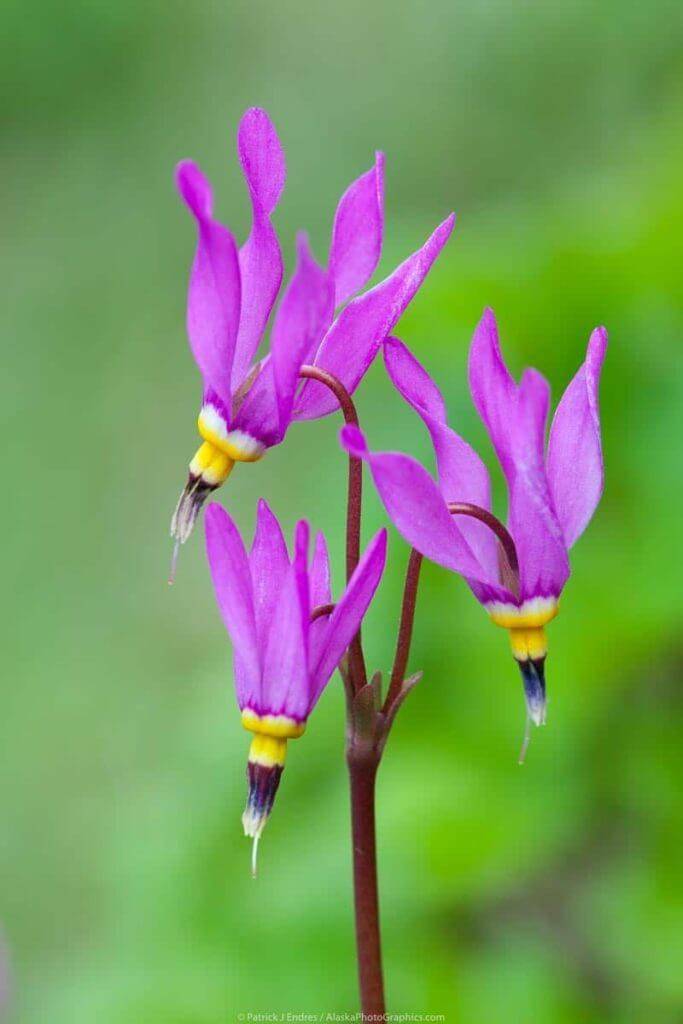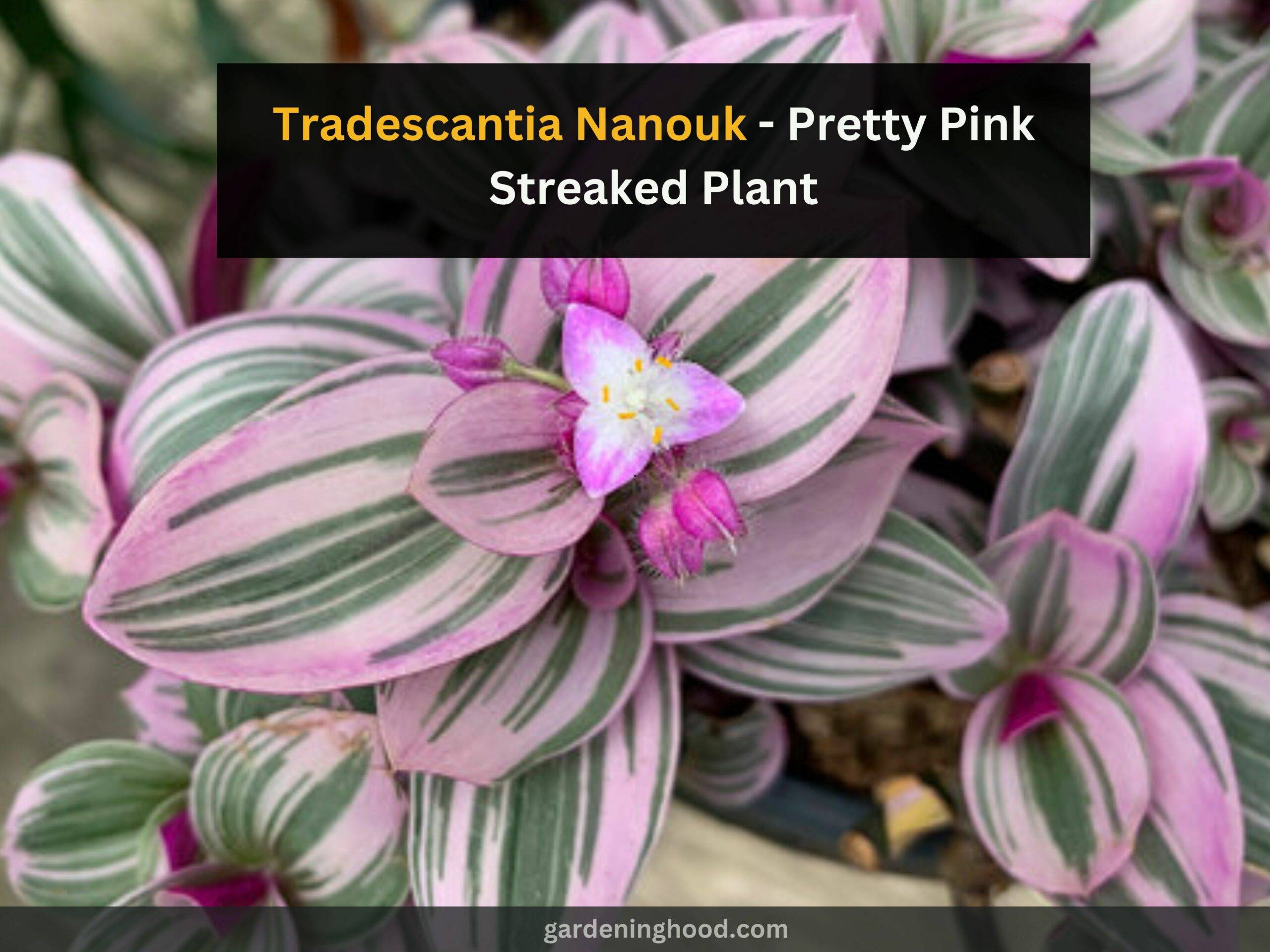Type of Shooting Star Flowers – Dodecatheon Species
For me, it was fascinating to learn about a plant called a shooting star. Do you find it interesting? Do you know what the most interesting thing is? I am talking about a type of shooting star flower called the Dodecatheon Species.
What are you waiting for? Let’s start to know them more closely, and trust me, after reading the information, you will be successful in growing them in your garden.
Key takeaways
- Dodecatheon meadia or the shooting starflower is a native perennial wildflower.
- Pentas or Starflowers are known as starflowers as they have star cluster formation and are named so for the shape of their clusters of five-petaled flowers.
- The various types of shooting star flowers are Goliath Shooting Stars, White Shooting Stars, and Alpine Shooting Stars.
- They are used to plant in the moist soil of loam, clay, or sand within an acidic, alkaline, or neutral PH Balance.
Basics about Dodecatheon meadia
Botanically known as Dodecatheon meadia, these flower species are native to North American regions. Shooting starflowers are a group of herbaceous perennials in the Primula family (Primulaceae). There are more than a dozen species, in the Dodecatheon genus, from which Dodecatheon meadia is widely common.
Dodecatheons flourish during spring. They are inactive or die during the harsh and hot summers thus returning to their roots. It forms basal clumps of lance-shaped leaves. Around 20 inches of flower stalks then emerge from the base clumps which then bear clusters of 1 inch of white, pink, and beautiful herbs with purple flowers, which we know as shooting stars.

How is Dodecatheon planted?
Dodecatheon is planted in the moist soil of loam, clay, or sand within an acidic, alkaline, or neutral PH Balance. Dodecatheons are sited in an area that is close to moisture-retaining soil like a pond or any water feature.
This plant needs ample water, and part sun and part shade. Planting any Dodecatheon is as simple as planting any other plant.
One can plant this just by digging a hole that is as wide and deep as the root ball of the plant so that it can grow with stability, needs a good amount of water after planting so that it can settle in the pot or the garden space.
How much care do Dodecatheons require?
Dodecatheons can be enjoyed and adored during their full glory during the spring. They become dormant or die while the harsh and hot summers thus returning to their roots. Dodecatheons require mild temperatures and wet or moist soil to grow again, hence spring is a more feasible time for them to bloom again.
A site with partial sun is ideal for shooting star plants. These plants can be planted under the shade of deciduous trees in summer so they can flourish during spring. Deciduous trees protect the plant from the harsh light of the sun. In colder regions, these plants can tolerate full sun, but usually, shade is more suitable for these plants in warmer or hot regions.
A few more details about the Dodecatheons are described below,
| Common Name | Shooting Star, Shooting Star Flower, Prairie Pointers, ShootingStar Plants |
| Botanical Name | Dodecatheon meadia, Pentas or Primula meadia |
| Moisture/Water | Moist soil of loam, clay, or sand requires ample water |
| Flowering/Nonflowering | Flowering |
| Flower colour | White, Pink, or Lavender |
| Specialties | Easy to grow and maintain. Aesthetic-looking flowers. Eye appealing look. It has a wide natural habitat thus being in both forests and prairies. |
| Height | 9″ to 20″ at maturity |
| Sun Exposure | Partial sun exposure |
| Flowering Season | Spring |
| Hardiness (The ability to endure difficult weather conditions) | Fully hardy |
A few types of Shooting Star Flowers – Dodecatheon Species
Usually, the pure species of Dodecatheon is found in the Lavender shade, but white-flowered species are quite famous too.
Goliath Shooting Stars
| Common Name | Shooting Star, Shooting Star Flower, Shooting Star Plants |
| Botanical Name | Dodecatheon meadia or Primula meadia |
| Moisture/Water | Moist soil of loam, clay, or sand requires ample water |
| Flowering/Nonflowering | Flowering |
| Flower colour | Lavender |
| Specialties | Easy to grow and maintain. Aesthetic-looking flowers. Eye appealing look. It has a wide natural habitat thus being in both forests and prairies. Rocket or Star-shaped flowers of beautiful lavender shade. |
| Height | 10″ to 27″ at maturity |
| Sun Exposure | Partial sun exposure |
| Flowering Season | Mid to late Spring |
| Hardiness (The ability to endure difficult weather conditions) | Fully hardy |
White Shooting Star
| Common Name | Toothed American Cowslip, White Shooting Star |
| Botanical Name | Dodecatheon dentatum |
| Moisture/Water | Moist soil of loam, clay, or sand requires ample water |
| Flowering/Nonflowering | Flowering |
| Flower colour | White, Pink, or Lavender |
| Specialties | Easy to grow and maintain. Aesthetic-looking flowers. Eye appealing look. It has a wide natural habitat thus being in both forests and prairies. Good for Pollination. Beautiful ornamental flowers that consist of 1-12 flowers with 5 lobes. |
| Height | 9″ to 27″ at maturity |
| Sun Exposure | Partial sun exposure |
| Flowering Season | Spring |
| Hardiness (The ability to endure difficult weather conditions) | Fully hardy |
| Native | Native to regions of Arizona, Idaho, Utah, British Columbia, and Oregon. |
Alpine Shooting Star
| Common Name | Alpine Shooting Star, Shooting Star Flower |
| Botanical Name | Dodecatheon alpinum |
| Moisture/Water | Moist soil of loam, clay, or sand prefers aquatic regions |
| Flowering/Nonflowering | Flowering |
| Flower colour | Light Pink or Lavender |
| Specialties | Easy to grow and maintain. Aesthetic-looking flowers. Eye appealing look. The flowers bloom with their mouths in the direction of the ground while it is a young saplings, but they become erect as they mature. |
| Height | 9″ to 20″ at maturity |
| Sun Exposure | Partial sun exposure |
| Flowering Months | June to August |
| Hardiness (The ability to endure difficult weather conditions) | Fully hardy |
| Native | Native to regions of Arizona, Utah, California, and Oregon. |
Conclusion:
Hence I can conclude here, after reading this information you will be successful in growing them in your garden. make sure to follow all the caring requirements the plant needs to thrive best.


